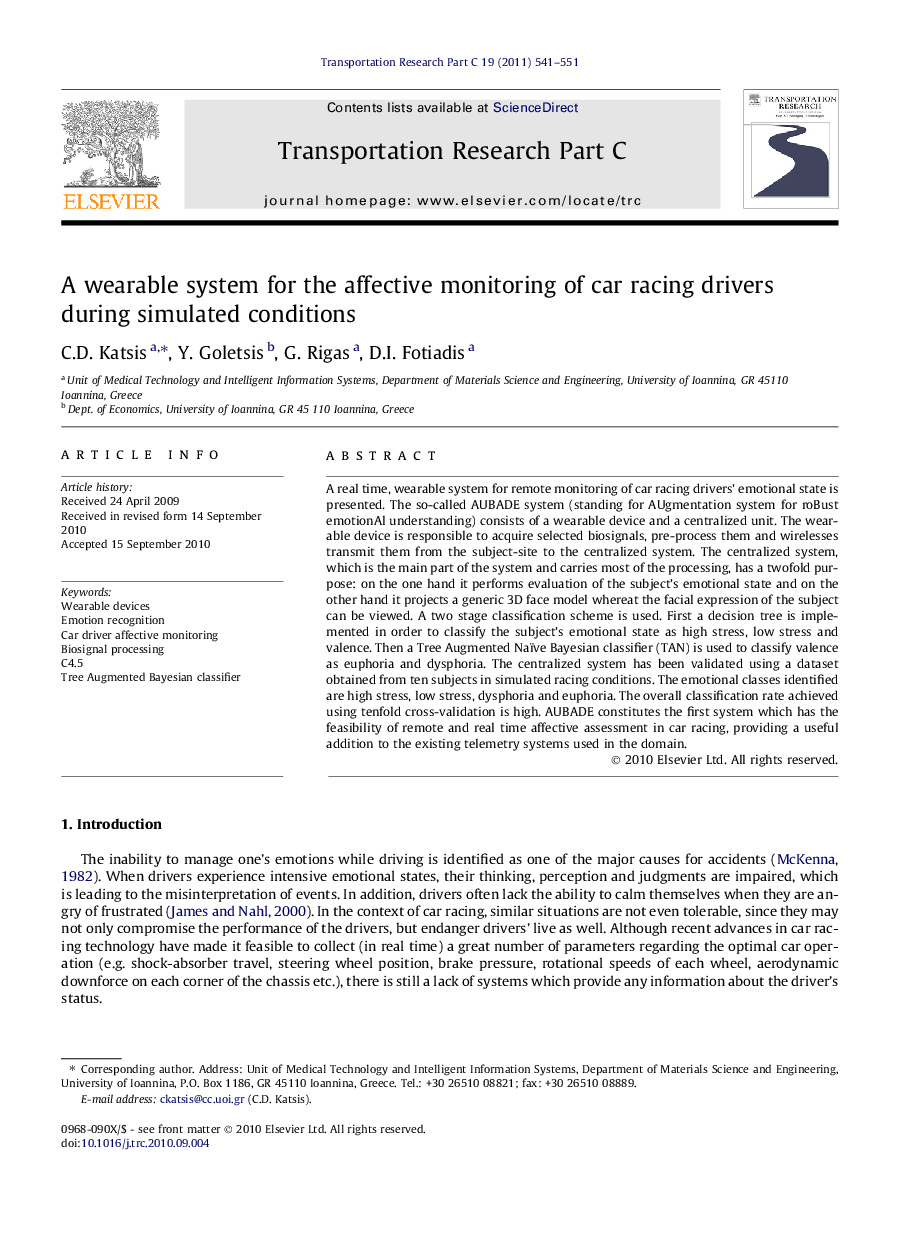| Article ID | Journal | Published Year | Pages | File Type |
|---|---|---|---|---|
| 526634 | Transportation Research Part C: Emerging Technologies | 2011 | 11 Pages |
A real time, wearable system for remote monitoring of car racing drivers’ emotional state is presented. The so-called AUBADE system (standing for AUgmentation system for roBust emotionAl understanding) consists of a wearable device and a centralized unit. The wearable device is responsible to acquire selected biosignals, pre-process them and wirelesses transmit them from the subject-site to the centralized system. The centralized system, which is the main part of the system and carries most of the processing, has a twofold purpose: on the one hand it performs evaluation of the subject’s emotional state and on the other hand it projects a generic 3D face model whereat the facial expression of the subject can be viewed. A two stage classification scheme is used. First a decision tree is implemented in order to classify the subject’s emotional state as high stress, low stress and valence. Then a Tree Augmented Naïve Bayesian classifier (TAN) is used to classify valence as euphoria and dysphoria. The centralized system has been validated using a dataset obtained from ten subjects in simulated racing conditions. The emotional classes identified are high stress, low stress, dysphoria and euphoria. The overall classification rate achieved using tenfold cross-validation is high. AUBADE constitutes the first system which has the feasibility of remote and real time affective assessment in car racing, providing a useful addition to the existing telemetry systems used in the domain.
Research highlights► Real time, wearable system for remote monitoring of car racing drivers’ emotional state. ► Identified emotional classes: high stress, low stress, dysphoria and euphoria. ► Useful tool for car racing teams, enabling the correlation between the driver’s emotional state with specific adjustments in the car’s performance.
